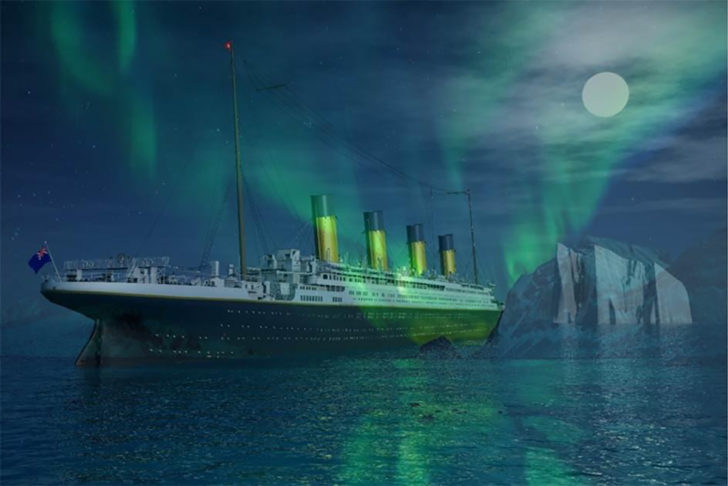A new study suggests that interference from a geomagnetic storm may have contributed to the sinking of the Titanic. The charged particles from the aurora borealis may have been strong enough to affect the ship’s navigation and communication systems.
A new explanation to the sinking of the Titanic
On the night of 14 April 1912, one of the worst maritime accidents in history occurred when the British liner, the RMS Titanic, hit an iceberg and sank in the North Atlantic Ocean. Of the 2,240 passengers and crew on board, around 1,500 were lost their lives.

A new study has suggested that interference from the aurora borealis on that fateful night may have contributed to the ship’s disaster. Mila Zinkova, a freelance meteorological researcher and photographer, examined the weather conditions on the night the Titanic sank. According to the survivors’ testimonies and the ship’s logbooks, the colourful trails of the Northern Lights were very numerous on the night of the tragedy.
Aurora Borealis in question
The study, published in the newspaper Weather

According to NASA, the aurora borealis form in the night sky as a result of solar-generated storms. These solar storms contain clusters of charged particles that are sometimes strong enough to travel to Earth. When this electrified gas encounters the Earth’s atmosphere and travels through the planet’s magnetic field, it interacts with atmospheric gases such as oxygen, which then glow green, red, purple or blue. These storms can also interfere with the Earth’s electrical and magnetic signals, causing power surges and disturbances.
Presence of aurora borealis confirmed
As Mila Zinkova pointed out in her article, if a solar or geomagnetic storm was powerful enough to produce aurora borealis, then that same magnetic energy may have been strong enough to affect the navigation and communication systems on board the 269-metre Titanic, as well as those of other ships coming to its rescue.

James Bisset, second officer of the RMS Carpathia who managed to save some survivors, noted in his logbook on the night of the rescue, « There was no moon, but the aurora borealis glittered like moonbeams gushing from the northern horizon ». Even though the Carpathia arrived to rescue the survivors five hours later, James Bisset reported that he could still see the « greenish rays » of the Northern Lights.
Navigation systems affected by the geomagnetic force
In addition, Lawrence Beesley, one of the few survivors of the tragedy, wrote of a glow that « fanned out across the northern sky, with faint coils extending towards the North Star ». For Mila Zinkova, this seemed to be a clear description of the Northern Lights.

The study showed that the Northern Lights were visible on the night of the tragedy, and then suggested that the geomagnetic force of the aurora affected the Titanic’s navigation systems, perhaps leading it straight to the iceberg. Even a slight deviation of 0.5 degrees from its trajectory would be enough to steer the ship towards a deadly collision, and it is possible that magnetic interference caused such an error in the ship’s compasses. « This seemingly insignificant error could have made the difference between colliding with the iceberg and avoiding it, » Ms Zinkova wrote.
Cascading problems for the ship
Moreover, reports from the night of the disaster itself cite « bizarre » radio signals heard by operators on board the RMS Baltic, another ship that came to the rescue of the Titanic.
Some of the distress signals emitted by the Titanic’s crew were not even recorded and the Titanic would not have received a number of responses. Another theory is that a fire on board the ship, which occurred a few nights before the sinking, contributed to the disaster. Although most historians agree that the collision with the iceberg is what actually caused the ship to sink, the earlier damage to the ship may only have accelerated its demise. It seems that a total misfortune sealed the fate of the Titanic.
